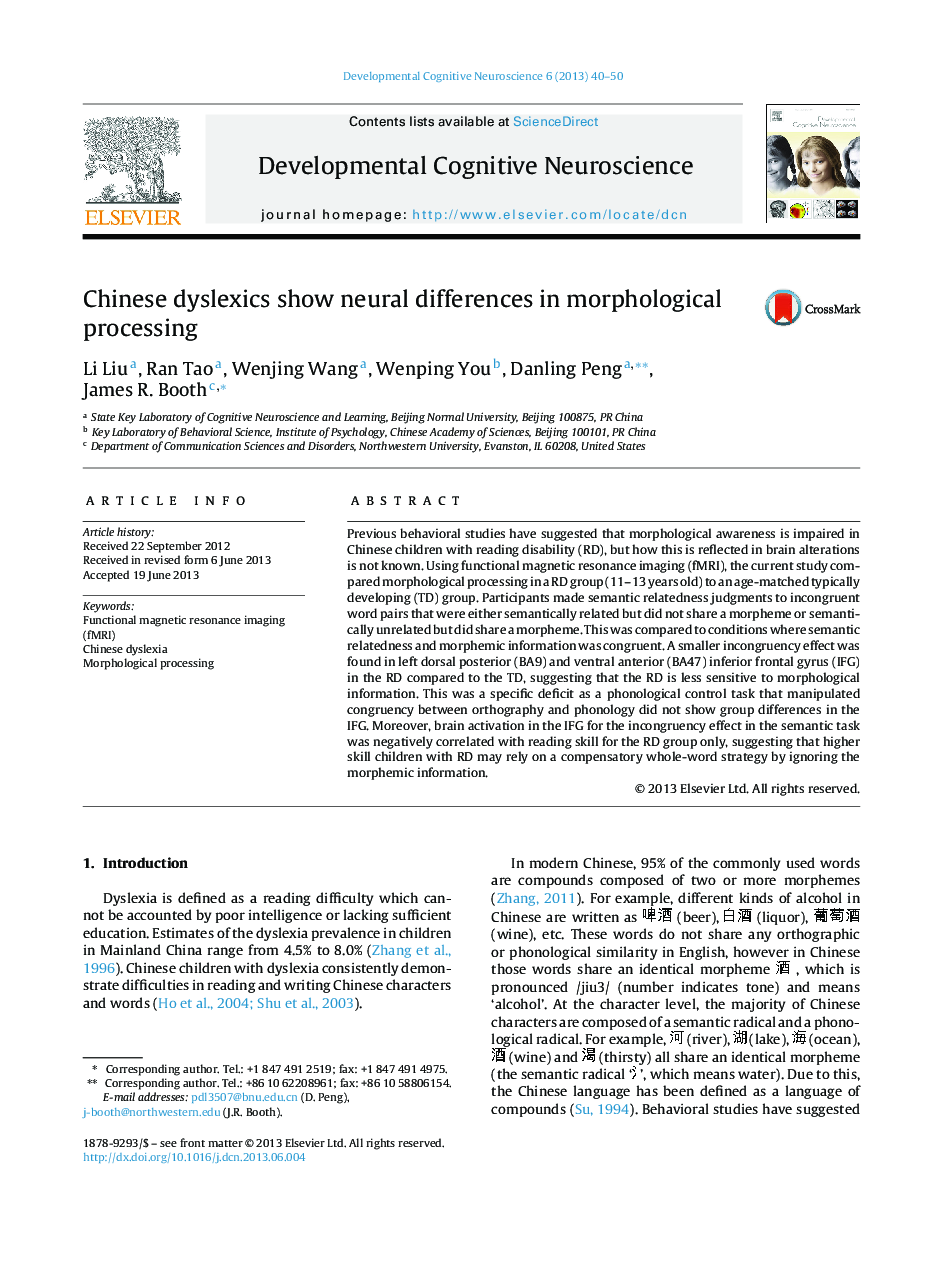| Article ID | Journal | Published Year | Pages | File Type |
|---|---|---|---|---|
| 6260921 | Developmental Cognitive Neuroscience | 2013 | 11 Pages |
â¢Chinese dyslexia showed a smaller morpheme-word incongruency effect in left IFG.â¢The smaller effect suggests less sensitivity to morphemes in the dyslexics.â¢Higher skill in dyslexics was related with smaller incongruency effect in left IFG.â¢Higher skill dyslexics may rely on a compensatory whole-word strategy.â¢Morpheme effect was specific as it was not found for a phonological task.
Previous behavioral studies have suggested that morphological awareness is impaired in Chinese children with reading disability (RD), but how this is reflected in brain alterations is not known. Using functional magnetic resonance imaging (fMRI), the current study compared morphological processing in a RD group (11-13 years old) to an age-matched typically developing (TD) group. Participants made semantic relatedness judgments to incongruent word pairs that were either semantically related but did not share a morpheme or semantically unrelated but did share a morpheme. This was compared to conditions where semantic relatedness and morphemic information was congruent. A smaller incongruency effect was found in left dorsal posterior (BA9) and ventral anterior (BA47) inferior frontal gyrus (IFG) in the RD compared to the TD, suggesting that the RD is less sensitive to morphological information. This was a specific deficit as a phonological control task that manipulated congruency between orthography and phonology did not show group differences in the IFG. Moreover, brain activation in the IFG for the incongruency effect in the semantic task was negatively correlated with reading skill for the RD group only, suggesting that higher skill children with RD may rely on a compensatory whole-word strategy by ignoring the morphemic information.
